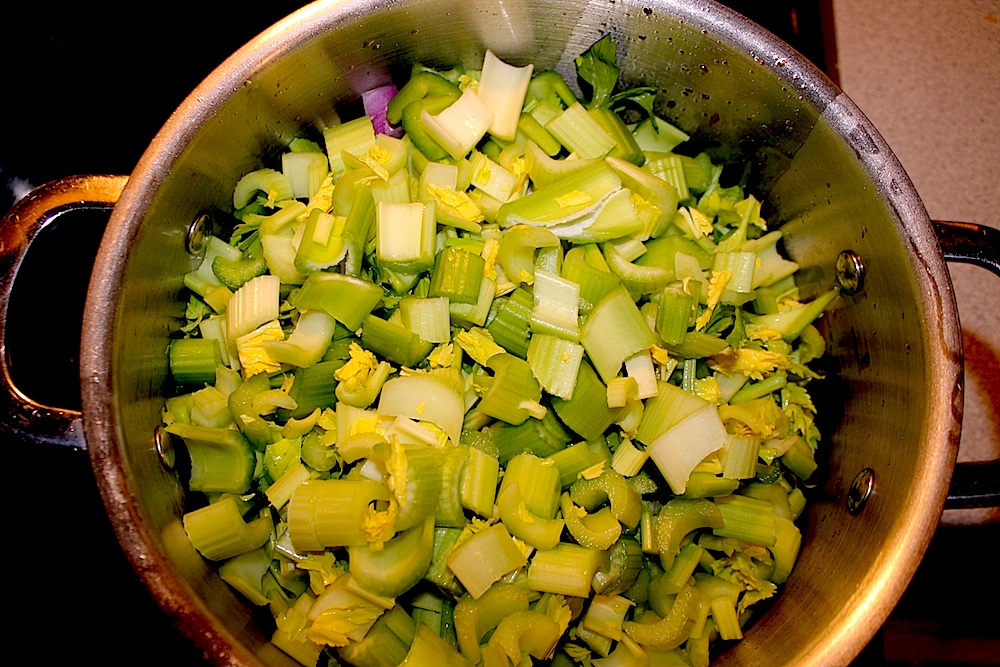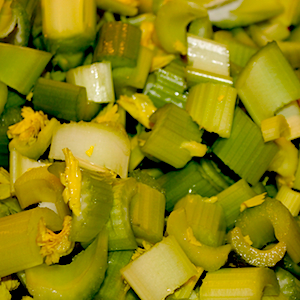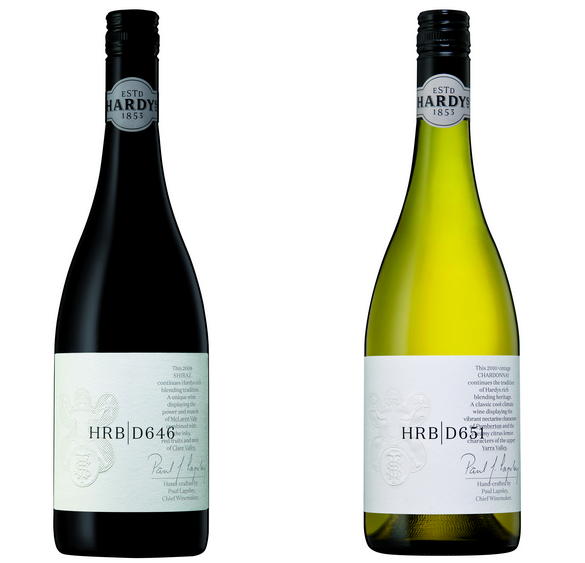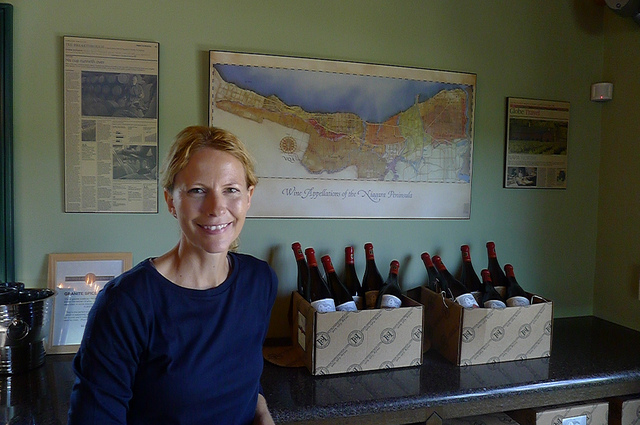
There are many delights on the succession of plates that make up chef Jason Bangerter’s inaugural tasting menu at Langdon Hall*, but one seems almost tailor made for me. It’s unlikely that chef Bangerter conjured up some mysterious culinary power to discern my renewed interest in a vegetable that seems to have been relegated chiefly as a garnish for chicken wings, but it was a treat to see good old celery play a prominent supporting role to a dish of veal loin braised in whey, with sweetbreads done in two ways. I won’t say celery made the dish, but it was just really nice to see it there.
Harold McGee, in On Food and Cooking, classifies celery as a herb: leaves, stalk and root. It’s actually part of the carrot family of aromatics, which includes its close cousin parsley as well as chervil, cilantro (coriander), dill, fennel and lovage. Yet, it’s eaten as a vegetable: a main thing, as opposed to a flavouring. I vote for making it a sort of hybrid between herb and veg. Maybe it fell out of favour because it became a mere vehicle for stronger flavours like peanut butter and raisins (i.e. ants on a log), blue cheese dressing, or Cheese Whiz.
What sets celery apart from every day vegetables is not merely its aromatic quality, it’s the nature of that quality. Celery is bitter. The Chinese, who traditionally cook the bitterness out of their edible plants, are on record for eating celery since the 5th Century. But in Europe, wild varieties were only hybrid into palatable ones in the 16th and 17th Centuries. Bitterness is the subject of Jennifer McLagan’s much anticipated new book to be published in September, and I hope it helps to spark a revival in its subject as her previous books on Bones, Fat and Odd Bits have done. Bitterness can be as comforting as delicious, especially when paired with complimentary tastes like saltiness, chilli heat, or a touch balancing sweetness.
Of the Western cuisines, Italian seems to be the one the most at home still with bitter flavours: think cimi di rapa, radicchio, Campari! In The Concise Gastronomy of Italy, Anna Del Conte’s entry for ‘Sedano” notes the various ways cooked and raw celery around the Italian peninsula and islands and reminds us of its essential role in the near universal slow cook starter soffrito. Del Conte ends her entry with the blanket statement: “Celery soups with pasta or rice are a standby in every family.”
A SORT OF CELERY SOUP RECIPE
I prefer my most of my starch outside of my soup bowl, in the form of good bread and butter or cheese, but celery soup is a standby in my family anyway. It begins by crisping up some salty pancetta or smoky bacon to bring salt to the pot. Once crisp, the pork belly is put aside and most of its fat drained (to be used in some other frying capacity). With just enough of the fat left to get things going a goodly amount of celery (including hearts and leaves) are sweated with onions (and/or a mix of alluvia like shallots and leeks, depending on what’s around) and parsley. I add one peeledcmedium sized Yukon Gold Potato, to give a bit of body. Everything has been chopped roughly first, without much fuss. When things look soft and translucent, in goes the chicken stock, made from the carcasses of a few previous roasts. Now that it’s soup, it’s brought to the boil then let to simmer for a while, before getting puréed in the pot with an immersion blender. Another simmer to marry the flavours one last time, and it’s ready to be served once garnished with the reserved pancetta or bacon bits, and whatever else you like, such as Parmesan, olive oil, chopped up parsley leaves and/or scallions. It’s not a hard recipe, and can be tweaked with the addition of just about anything.
The beauty of the soup is that, although it’s been mellowed by heat, the character of the celery remains. It’s complimented by the saltiness of the pork and the sweetness of the cooked onion and broth. Lifted by grassy note of parsley, which also helps to make it good and green, it provides a much needed hint at spring on a long winter night.
 Malcolm Jolley is a founding editor of Good Food Revolution and Executive Director of Good Food Media, the company that publishes it. Follow him at twitter.com/malcolmjolley
Malcolm Jolley is a founding editor of Good Food Revolution and Executive Director of Good Food Media, the company that publishes it. Follow him at twitter.com/malcolmjolley
*Stay tuned: more on this to come.







